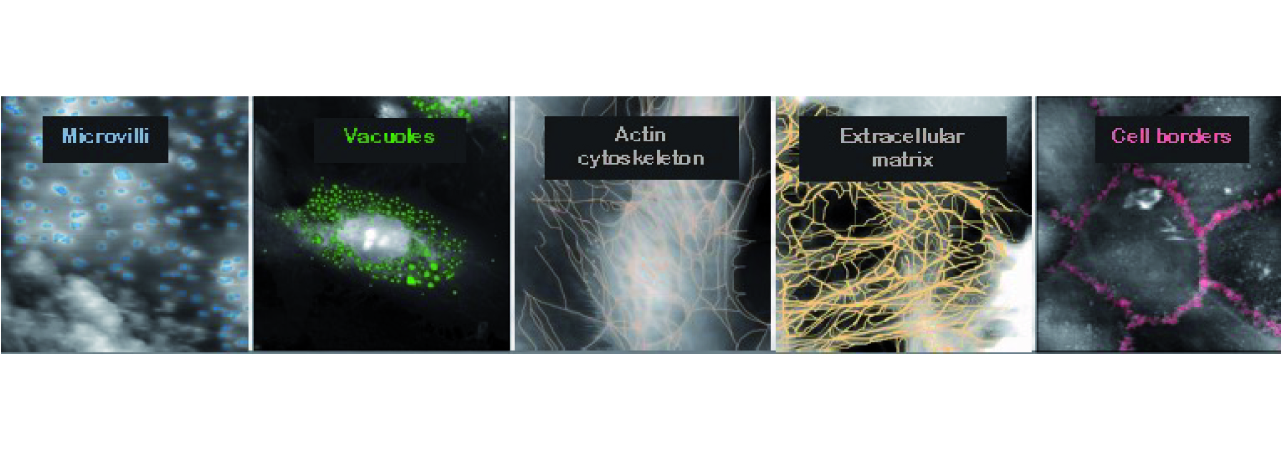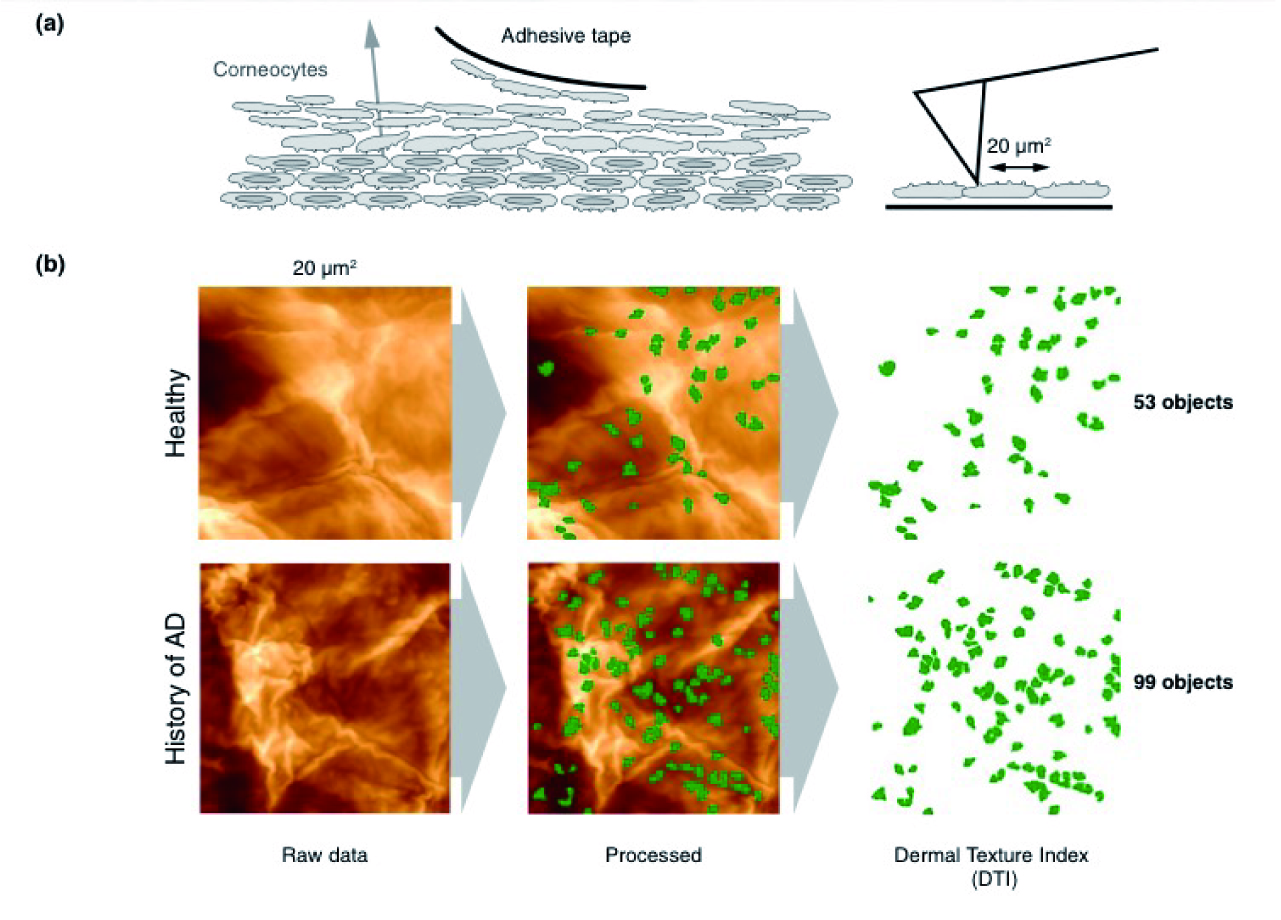
feeling force
Atomic Force Microscopy (AFM)
Reconstructing the z-values over a scanned xy-plane delivers a topographical map. Resolution reaches down to nanometers (1m divided by a billion), even on biological specimen. Contact forces are kept extremely low, so that samples remain unaltered.

Therefore, a specialized solution for AFM-topographies was built by the scientific team nAnostic™.* Fundamental to object recognition is an adopted thresholding routine for local deviational volumes (LDV), followed by machine learning. Various applications on cultivated epithelial and endothelial cells have demonstrated the physiological relevance of this novel measure.
*The procedure is patented under EP 2 435 829 B1 and US 8,798,935 B2 (Serend-ip GmbH)
Dermal Texture Index

(a) Tape strips harvest surfacial corneocytes, which are subjected to AFM imaging.
(b) AFM topography (height is presented in golden-brown color scale) are processed with custom-built proprietary algorithms*. Characteristic protrusions are marked in green by the software. Ten random areas are scanned, and the average number of identified objects is termed Dermal Texture Index (DTI). Here, two single images are exemplarily shown of two individuals, which both look normal and are free of dermatological symptoms. But while the person, that never faced any skin problems („healthy“) has a DTI of 53, a person having suffered from atopic dermatits years ago, does exhibit an elevated DTI of 99. (Engebretsen et al. JEADV 2018, 32, 796-804)